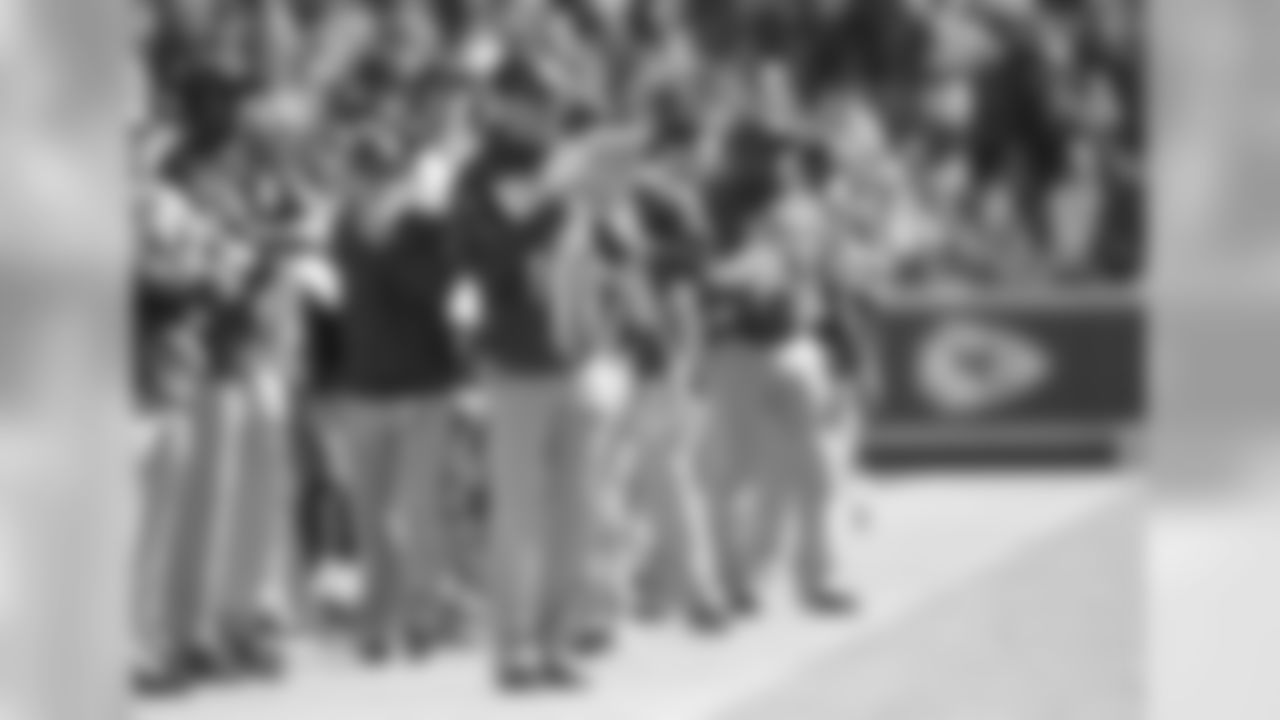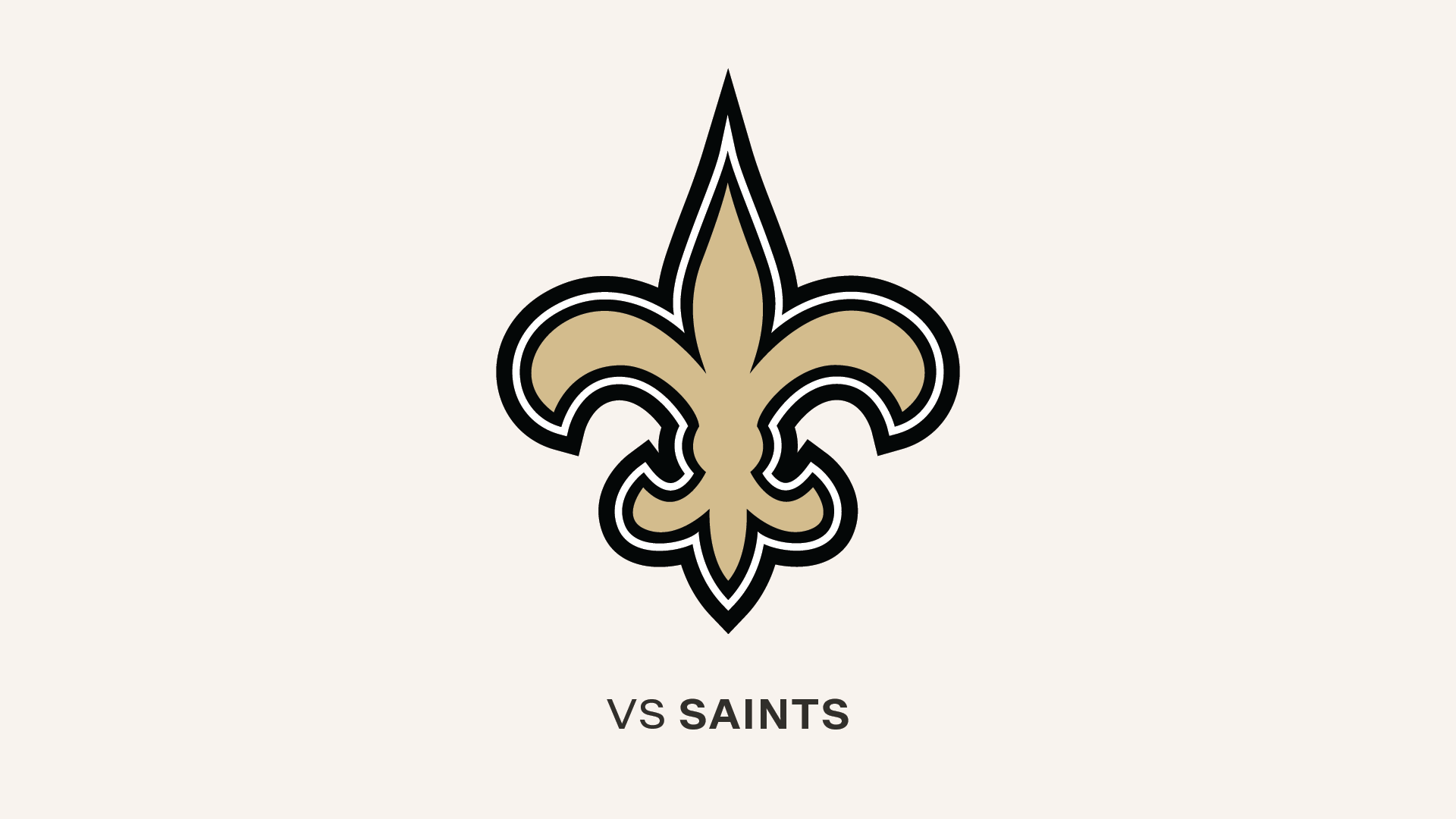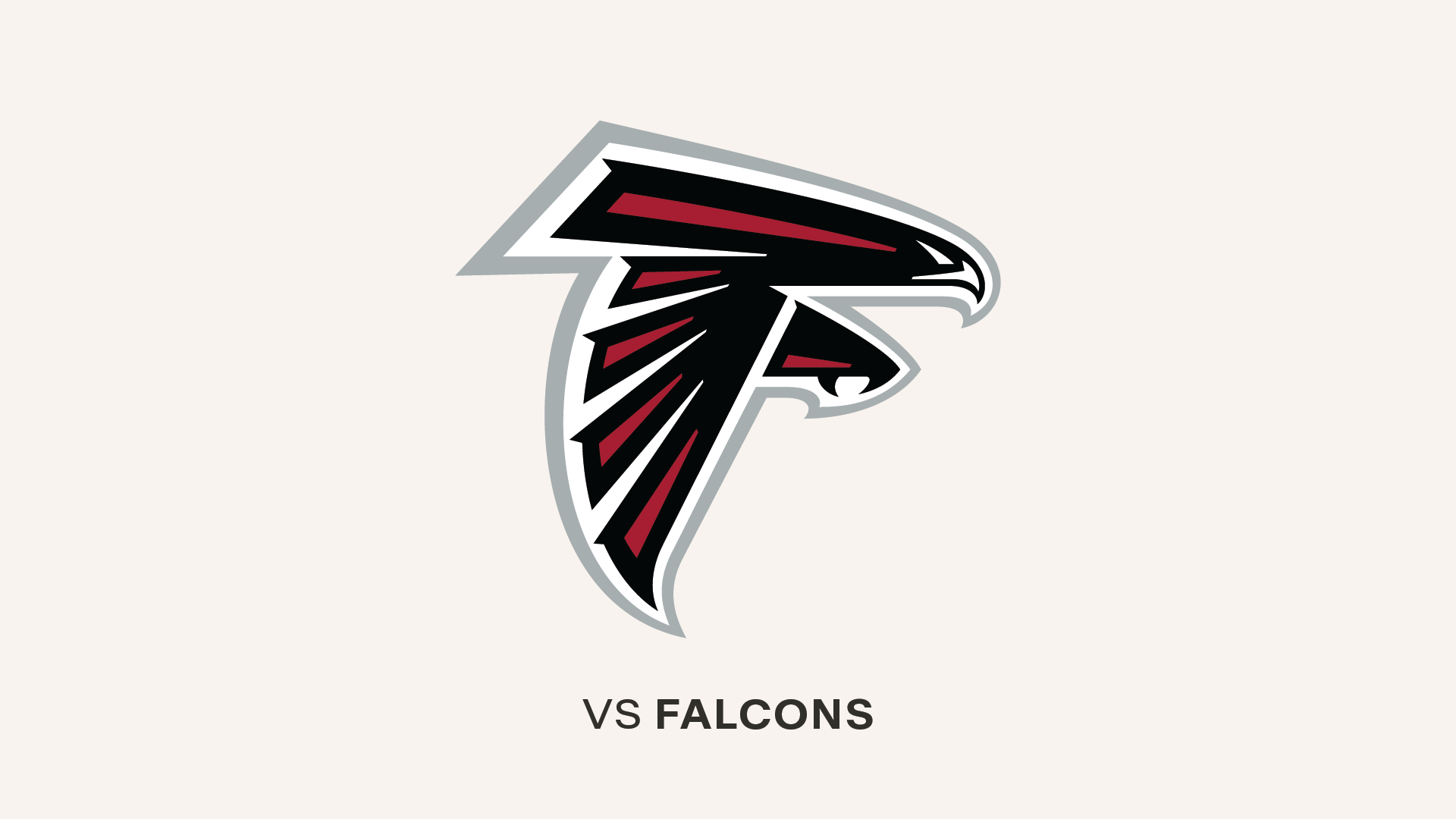For most NFL teams, in most in-season weeks, Tuesday is the player's day off. It's a chance to rest, regroup and – win or lose the previous weekend – turn the page to the next opponent.
It's also a perfect time for us to discuss the hottest topics surrounding the Tampa Bay Buccaneers. And for that reason, the One Buc Mailbag is back! Every Tuesday, I'll be fielding a handful of questions from the fans, but you can send them in all throughout the week. The easiest way is to hit me up on Twitter (@ScottSBucs, using #BucsMailbag), but if 140 characters aren't quite enough to get your point across, you can also send an email to tbbsocial@buccaneers.nfl.com.
This week, we start with one fan's proposal for a different way to handle bye weeks. Another Bucs fan wants to know when we're going to see the red jerseys on game day. Finally, we discuss the concept of "mortar kicks" on kickoffs and whether the Bucs are actively changing their strategy in that regard. Let's get to it.
1. Bye Week Consolidation?
Why not give the entire AFC a bye week #8 and the NFC a bye week #9. Flip the weeks off season to season. What do you think?
- Unidentified sender (via email to**tbbsocial@buccaneers.nfl.com**)
There was no name on this email but I'm going to call the sender Blues Dawg thanks to a portion of his or her email address. Blues Dawg proposes a concept that I have sent to me, more or less, at least once a year.
Pictures of the Top 10 Seahawks in Week 11, according to their Pro Football Focus player grade.

56 DE Cliff Avril (79.4)

55 DE Frank Clark (80.6)

68 C Justin Britt (81.6)

29 FS Earl Thomas (83.1)

88 TE Jimmy Graham (85.7)

89 WR Doug Baldwin (87.9)

50 LB K.J. Wright (88.1)

3 QB Russell Wilson (89.6)

54 LB Bobby Wagner (89.9)

31 SS Kam Chancellor (91.1)
If you're proposing a change in the way bye weeks are distributed, I presume that means you have a problem with the current system. And I'm guessing that problem is one of two things: 1) It's unfair that some teams get later bye weeks, or 2) There are too many weeks in the season in which the schedule is diluted by multiple teams on byes. That latter concern is sometimes a bigger deal for those who play fantasy football. (On that front, I'm not casting judgment. I play, and it can be tough to field a full lineup during the weeks when six teams are off.)
The first thing we have to remember is why bye weeks exist. They do NOT exist due to a belief that players need a week off during the season, even if that is now an established and welcome part of the annual schedule. Bye weeks were first introduced into the schedule in 1993 for a very simple reason: To extend the season from 16 to 17 weeks in order to generate more advertising revenue. It's as simple as that. The NFL even tried a two-bye week, 18-game season in 1994 but scrapped that idea after one year.
Blues Dawg's ideas would still lead to a 17-week season, but I see three problems with it right off the bat.
- With 16 teams off you would be down to only eight games for each of those two bye weeks, and I think that's diluting the product too much. With one game on Monday night and one on Thursday night, you're now down to just six games for Sunday. Right now, even in the weeks in which six teams are on byes, you still have 11 games on Sunday, which is nearly twice as many.
- In the current network setup, CBS airs the AFC games (or the interconference games in which the visiting team is in the AFC) and Fox airs the NFC games (or the interconference games in which the visiting team is in the NFC). If you eliminate one conference entirely from the schedule, that's a dark week for one of those two networks, and you know that isn't going to fly. If you try some tradeoff idea during those two weeks, each network is going to end up with a very light Sunday schedule, especially with one of those six games on NBC in the evening.
- Scheduling is already very difficult for the league, which is why it takes until midway through April to get it done every year. Various venue conflicts in 32 cities have to be taken into account and the league tries not to create overly burdensome travel situations or other unfair situations for any team. The schedule-makers make use of 136 computers in the process but also have to do much of it by hand as they try to satisfy teams, broadcast partners and fans looking for the marquee matchups at the best times. This bye week proposal would complicate things considerably, since there would be a limited number of matchup options for those two weeks. Other than the last two weeks of the season, when the league loads up on intradivision and intra-conference games in the hopes of having as many meaningful contests as possible, there isn't a week on the schedule without at least two AFC-vs.-NFC games.
Blues Dawg's proposal is pleasingly simple, which I think is its biggest draw. However, in this case, if it seems too simple to be a real option, it probably is.
2. Seeing Red?
How does this Sunday strike you, Brian?
So I guess Brian is a bigger fan of the Bucs' red jerseys than the white ones. Or maybe, after the Bucs have donned white in nine of their first 10 regular-season games, he's just ready for a change. Well, your wish has been granted, Brian: The Buccaneers will wear red jerseys and pewter pants when they play host to the Seattle Seahawks this Sunday at Raymond James Stadium.
Now, the way Brian worded his question suggests – or at least makes the joke – that the Buccaneers have purposely avoided wearing their red jerseys because they prefer the look of the white ones. I can assure you that's not the case. The red jerseys are very popular around here. That's true, too, of the red Color Rush jerseys the players donned for their Thursday night game against Atlanta in Week Nine.
There are actually two things at play here, Brian, and one of them is out of the Buccaneers hands. First, for every road game, the Bucs' jersey-color choice is actually made by the home squad. They determine if they are going to wear a white or a color jersey, and then the Bucs have to wear the opposite. Every team the Bucs have played so far this season has gone with their color jerseys, putting the visitors into white.
Obviously, that means the Bucs have the choice in their home games, of which there have been five so far. It's actually four, because of the aforementioned Color Rush game. And in each of those four afternoon games, the Buccaneers have chosen to wear white? Why? Are the Buccaneers that boring when it comes to fashion choices?
No, of course not. It's the Tampa heat and humidity, plain and simple. It is an edge, to some degree, to wear white and force opponents into darker jerseys on hot days. Every little bit helps. Now, if he happened to be at the Bucs' last home game, a win over Chicago on November 13, I'm sure Brian would have questioned the decision to wear white on that afternoon. Even though it was 81 degrees with 61% humidity, it was a relatively pleasant afternoon (says the guy who spends the game in the shelter of the press box, without pads and a helmet on).
But here's the thing: That decision wasn't made on November 13, or in the week leading up to that game. Every team in the league must inform the NFL of its home-game jersey choices way back in the spring, after which their opponents are notified so they know what jerseys to pack. The Bucs couldn't have switched from white to red on Sunday after seeing what the weather was like, even if they wanted to. In the spring, they obviously had to guess what the weather would be like in the second week of November, and recent history suggested it would be hot, and possibly very hot.
This is nothing new. The Buccaneers have been following this same jersey pattern since pretty much forever. You should expect to see a lot of red from here on out.
3. A Change in Kickoff Strategy?
Scott – We heard the words mortar kick a lot earlier this year when everyone was talking about the new touchback rule. I think some teams like New England are using that strategy a lot (I didn't look anything up to see if I was right – I figured you would do that!). It seems to me like the Buccs just want to get touchbacks as much as they can and that the rookie kikcer is pretty good at that. That's fine I guess but I was watching the KC game…which was great!.....and it seemed like we were doing more of those mortar kicks. Are the coaches changing their mind on that strategy? It seemed to work. Personally I'd like to see more of that.
Thanks and Go Bucs!
Jim Dudan (via email to**tbbsocial@buccaneers.nfl.com**)
Just so we all know what we're discussing here, Jim is referring to the new rule in 2016 that moved the starting line of scrimmage after a kickoff touchback from the previous spot of the 20-yard line out to the 25. Touchbacks after punts are still spotted at the 20. Ostensibly, the purpose of this was to make the kickoff touchback more desirable for return teams, which would reduce the number of overall kickoff returns. That play has long concerned the league due to the higher risk of injuries than most other football plays.
The ink was barely dry on that addendum to the rule book when strategists both in and out of the NFL suggested it might actually produce the opposite result of what was intended. Kicking teams might be less likely to settle for touchbacks, believing that their coverage teams could stop most returns short of the 25-yard line. A team adopting that strategy would try what Jim refers to as a "mortar" kick, one that, if optimally done, would have as much hang time as possible and come down inside the five-yard line.
The fact that Jim immediately thinks of the Patriots when the subject comes up is probably because, after an opening-week win at Arizona, New England Head Coach Bill Belichick said that hitting kickoffs short was a key factor in controlling field position in his team's victory. Is there evidence that the Patriots have been sticking with this strategy for much of the season? Well, they have had the sixth-most kickoff returns against them this year, at 23. The Houston Texans have allowed the most kickoff returns, at 34, followed by Buffalo (32), Oakland (27), San Francisco (27) and Cincinnati (23). The Buccaneers are 19th, by the way, with 18 returns against.
Of course, some teams kick off more than others (because they score more than others) so kickoff touchback is probably a better measure. The Patriots have the 10th-lowest touchback percentage in the league (at 56.4). Houston remains at the top, at 25.0%, far ahead of Buffalo (37.0%). The Buccaneers rank right in the middle of the league with a touchback percentage of 60.8%.
However, we also have to consider personnel here. I don't think the Texans are tops on that list solely due to strategic reasons. Houston's kicker Nick Novak, has simply not been a top touchback-producer throughout his career. He was at 37.7% last year, and that was a career-high. In 2014, he only got touchbacks on 12.8% of his kicks. In contrast, New England's Stephen Gostkowski produced touchbacks at a 71.1% clip and has generally been strong in that department throughout his career. This year, he's done to 56.4%. To me, that suggests that the Patriots are purposely kicking it short more often than before.
We can't do the same analysis with the Buccaneers because Roberto Aguayo, as you said Jim, is a rookie. I guess you could look at Aguayo's game-by-game kickoff totals for a clue, and indeed his numbers have gone down in recent weeks. Buccaneer opponents took touchbacks on 25 of their first 33 kickoffs received, but in the last three games they've only taken six touchbacks on 18 kickoffs.
A behind-the-scenes look at the Buccaneers' game against the Chiefs.

13 WR Mike Evans

Bucs vs. Chiefs

3 QB Jameis Winston

Bucs fans

13 WR Mike Evans

13 WR Mike Evans and fans

Bucs fans

8 QB Mike Glennon

38 CB Jude Adjei-Barimah

Bucs fans

58 LB Kwon Alexander and #38 CB Jude Adjei-Barimah

Bucs huddle

Head Coach Dirk Koetter

72 C Ben Gottschalk, #69 OT Demar Dotson, #98 DT Clinton McDonald, and #76 OT Donovan Smith

Bucs fans

3 QB Jameis Winston

29 DB Ryan Smith

Bucs fans

93 DT Gerald McCoy

Bucs huddle

22 RB Doug Martin

Bucs fans

Run Game Coordinator and Offensive Line Coach George Warhop

Run Game Coordinator and Offensive Line Coach George Warhop

Bucs huddle

93 DT Gerald McCoy

54 LB Lavonte David, #52 LB Cameron Lynch, and #58 LB Kwon Alexander

3 QB Jameis Winston

77 OL Caleb Benenoch, #93 DT Gerald McCoy, and #76 OT Donovan Smith

93 DT Gerald McCoy

13 WR Mike Evans

93 DT Gerald McCoy

30 S Bradley McDougald and #37 S Keith Tandy

92 DE William Gholston

89 WR Russell Shepard

54 LB Lavonte David

93 DT Gerald McCoy and #58 LB Kwon Alexander

Bucs fans

13 WR Mike Evans

89 WR Russell Shepard

21 CB Alterraun Verner and #52 LB Cameron Lynch

52 LB Cameron Lynch

Offensive Coordinator and Wide Receivers Coach Todd Monken and #3 QB Jameis Winston

3 QB Jameis Winston

54 LB Lavonte David

19 K Roberto Aguayo and Special Teams Coordinator Nate Kaczor

54 LB Lavonte David and #51 LB Daryl Smith

Bucs vs. Chiefs

51 LB Daryl Smith, #52 LB Cameron Lynch, and #53 LB Adarius Glanton

13 WR Mike Evans and #3 QB Jameis Winston

16 WR Freddie Martino

75 DT DaVonte Lambert, #57 DE Noah Spence, and #93 DT Gerald McCoy

3 QB Jameis Winston and Head Coach Dirk Koetter

93 DT Gerald McCoy and Defensive Line Coach Jay Hayes

89 WR Russell Shepard, #3 QB Jameis Winston, #54 LB Lavonte David, #93 DT Gerald McCoy, and #91 DE Robert Ayers

Bucs fans

Bucs special teams

Bucs vs. Chiefs

57 DE Noah Spence

74 G Ali Marpet, #3 QB Jameis Winston, and #68 C Joe Hawley

52 LB Cameron Lynch, #53 LB Adarius Glanton, and #37 S Keith Tandy

Head Coach Dirk Koetter and #3 QB Jameis Winston

Head Coach Dirk Koetter

Bucs vs. Chiefs

Linebackers Coach Mark Duffner and #58 LB Kwon Alexander

58 LB Kwon Alexander

23 S Chris Conte

Head Coach Dirk Koetter

54 LB Lavonte David, #3 QB Jameis Winston, #89 WR Russell Shepard, #93 DT Gerald McCoy, and #91 DE Robert Ayers

Bucs vs. Chiefs

23 S Chris Conte

28 CB Vernon Hargreaves and #23 S Chris Conte

3 QB Jameis Winston, #45 TE Alan Cross, and #82 TE Brandon Myers

45 TE Alan Cross and #10 WR Cecil Shorts

Running Backs Coach Tim Spencer, #45 TE Alan Cross, and Director of Player Development Duke Preston

3 QB Jameis Winston

3 QB Jameis Winston

Bucs special teams

Head Coach Dirk Koetter

45 TE Alan Cross

45 TE Alan Cross

3 QB Jameis Winston

Bucs vs. Chiefs

89 WR Russell Shepard and #26 CB Josh Robinson

Bucs huddle

Bucs vs. Chiefs

Head Coach Dirk Koetter

75 DT DaVonte Lambert and Linebackers Coach Mark Duffner

Head Coach Dirk Koetter

13 WR Mike Evans and #84 TE Cameron Brate

Secondary Coach Jon Hoke, Head Coach Dirk Koetter, Assistant to the Head Coach Zack Grossi, Special Teams Coordinator Nate Kaczor, #3 QB Jameis Winston, #69 OT Demar Dotson, and #52 LB Cameron Lynch

58 LB Kwon Alexander

General Manager Jason Licht and #89 WR Russell Shepard

3 QB Jameis Winston

13 WR Mike Evans

3 QB Jameis Winston

76 OT Donovan Smith

28 CB Vernon Hargreaves

23 S Chris Conte and Head Coach Dirk Koetter

57 DE Noah Spence

3 QB Jameis Winston
Is that evidence that the Buccaneers are switching strategies and going to mortar kicks. I don't think so. I'm sure that Jim is reacting to the fact that the Chiefs had five kickoff returns on Sunday, which is the most the Bucs have faced in any game this season. That was on six kickoffs, four of which did travel into the end zone. Now, you know that Dirk Koetter and his staff are not going to discuss strategy openly, so this is just my own guess, but I would say there was no intent to get more kickoff returns on Sunday. I think Aguayo just happened to hit a handful of his kickoffs shorter than he usually does. It's even possible that the accumulation of a lot of kicks through 10 games is leading to a little less distance overall for the rookie kicker. And we should also note that Sunday's game was played in cool, dry weather with a bit of wind. Though this might seem counter-intuitive, cool and dry air offers more resistance to things flying through it than does hot and humid air.
At the beginning of the season, Koetter, speaking in very general terms, said a team might choose different kickoff strategies in different weeks – and even at different points during the same game – based on the opponent and other factors. If you were choosing one game in which to encourage more returns, it probably would not have been the one on Sunday in Kansas City because the Chiefs have one of the league's most dynamic return men in Tyreek Hill.
That said, after seeing the results of Sunday's kickoffs, maybe Koetter's Buccaneers will purposely try the mortar kick a little more often. Tampa Bay's coverage teams were excellent, stopping each return somewhere between Kansas City's 17 and 22-yard line. On six kickoffs, the Chiefs started at an average of their own 20-yard line. If Aguayo had simply boomed all of his kicks deep enough to discourage returns, that average would have been the 25.
























